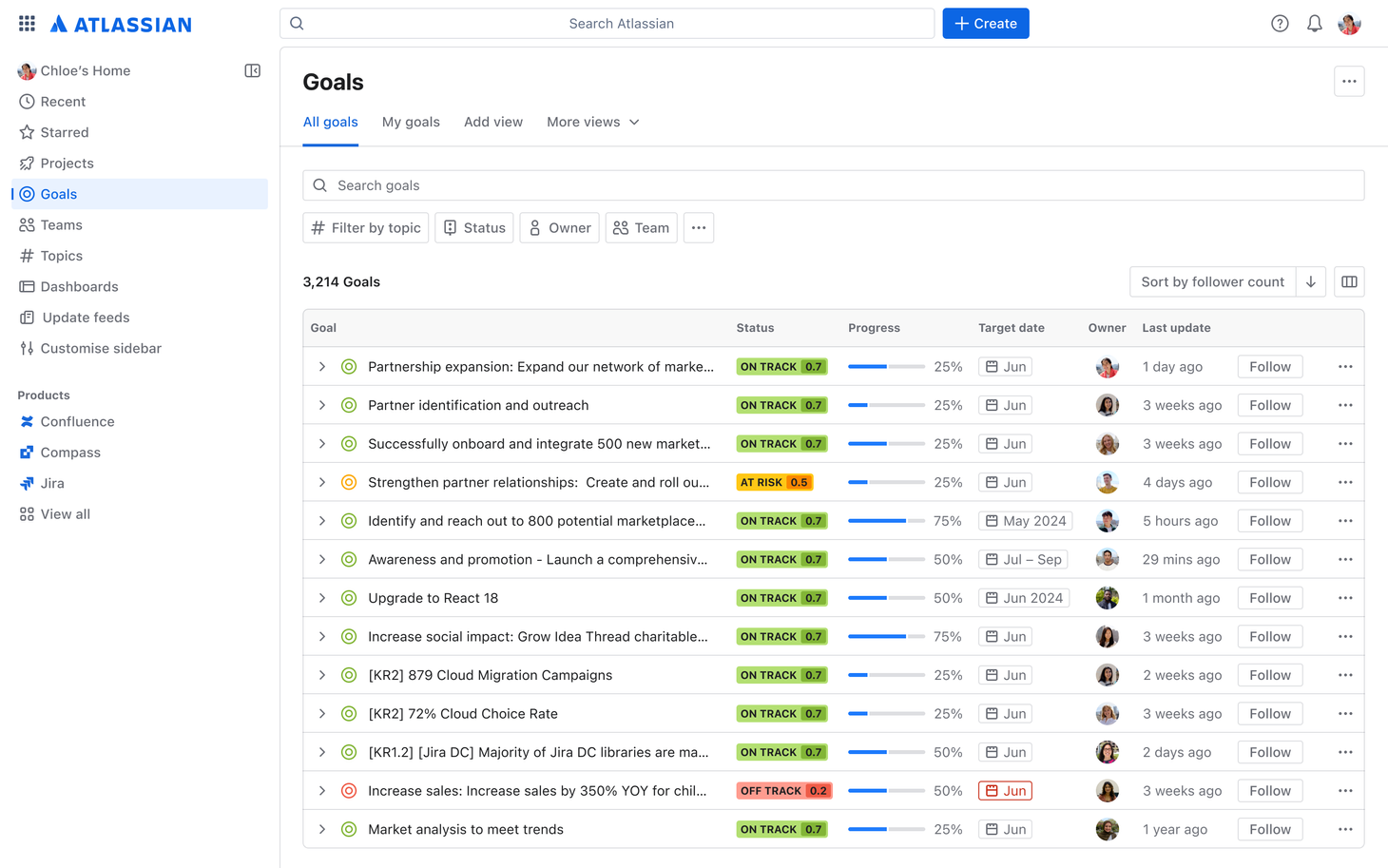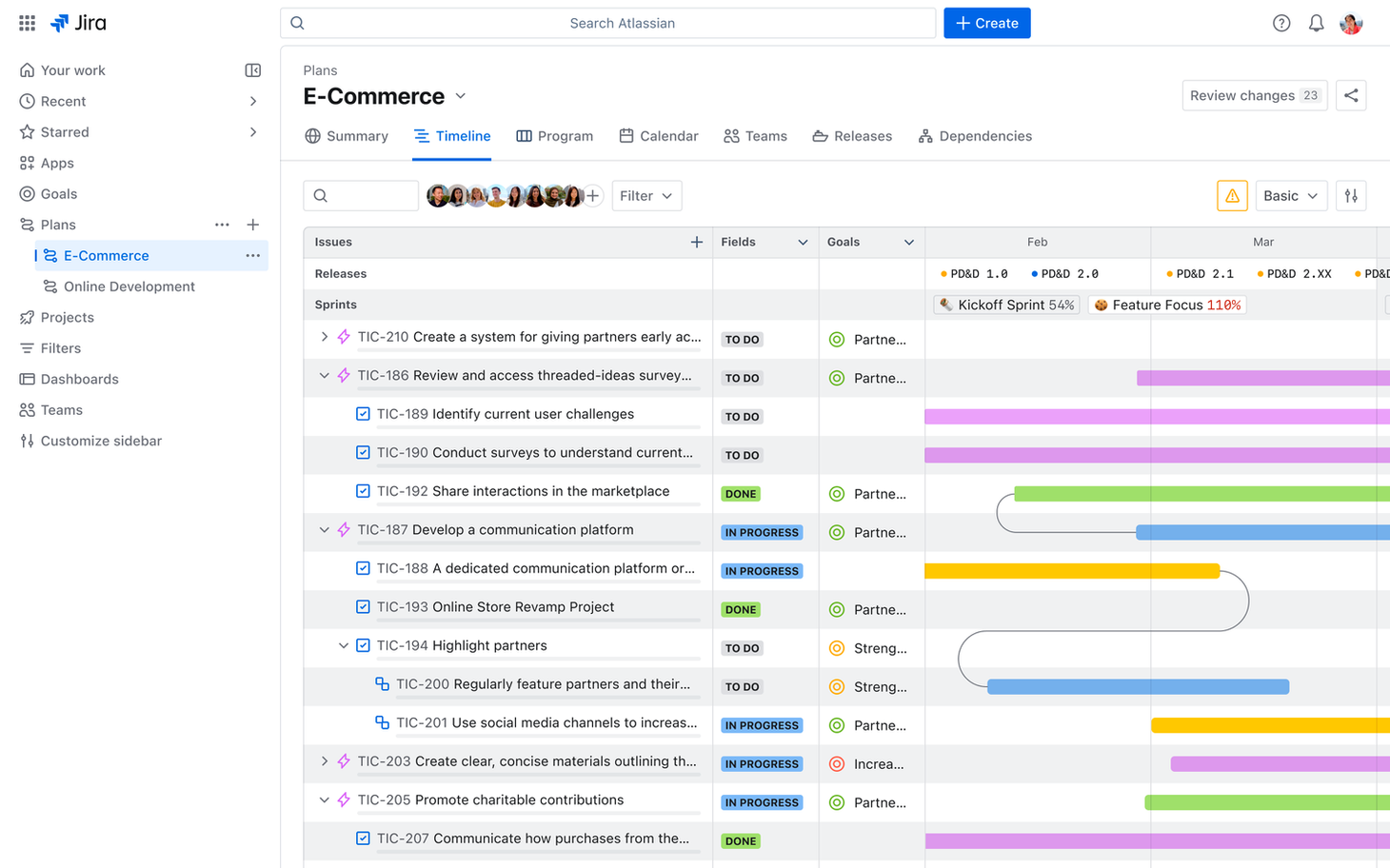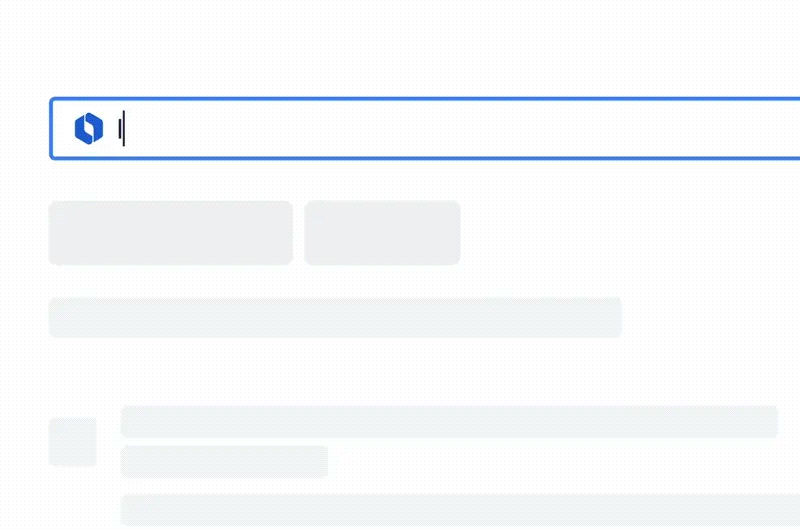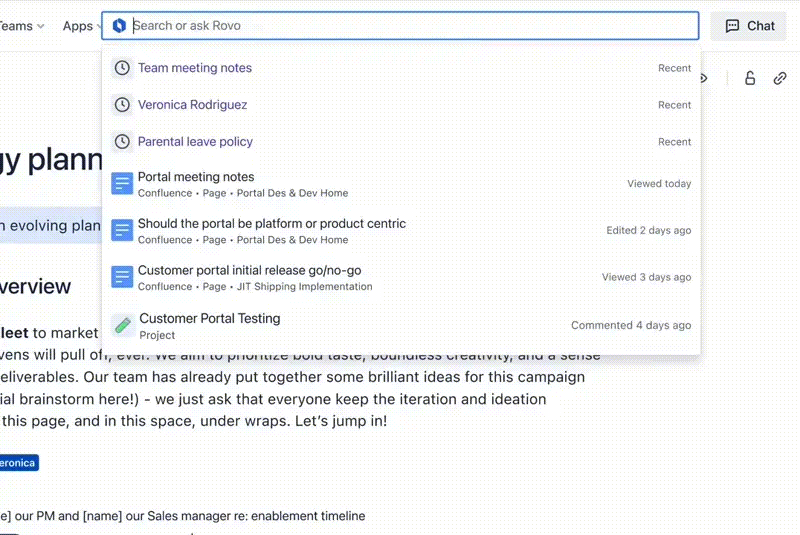Trending News
17 October, 2024
14.19°C New York

At its Team ’24 event in Las Vegas, Atlassian today announced that it is combining Jira Software with Jira Work Management into a single product under the “Jira” brand.
The origins of Jira, Atlassian’s flagship project management tool, are in software development and issue tracking for developers, but throughout the past few years, the company started to launch Jira versions for other teams as well. These included Jira Work Management for business teams like marketing, sales and human resources, which launched in 2021 and replaced a previous product called Jira Core.
“We believe great teams are built on a foundation of shared goals, coordinated work, and free-flowing information across functions,” writes Dave Meyer, the head of product for Jira, in today’s announcement. “That’s why the latest evolution of Jira offers a shared place for every team to align on goals and priorities, track and collaborate on work, and get the insights they need to build something incredible, together. We’ve taken the best of Jira Work Management and Jira Software to make a single project management tool ready to help any team go from good to great.”
The idea here is to offer a cross-functional tool that allows different teams inside a company to more easily collaborate and track their work. While there were already connections between Jira Software and Jira Work Management (plus Work Management is already included in every Jira subscription for free), Atlassian says that this combined version will reduce friction and help different teams align on common goals, no matter whether they are engineers, marketers or designers, for example.
It’s worth noting that Jira Service Management for IT teams is not affected by this change.
Atlassian launches a Jira for every team
With this change, Atlassian is also bringing a number of new features to Jira to enable this kind of collaboration. Unsurprisingly, these include several new AI-based tools.
Maybe the most interesting of these is the new AI work breakdown (coming to Jira and Jira Premium users soon), which can help teams break down their epics into individual issues (or issues into sub-tasks) automatically — with the ability to edit them manually, too, of course. That takes away some of the grunt project management work and will free up project managers to focus on the bigger-picture items on their to-do lists.
Soon, Jira will also be able to sum up issue comments automatically. This capability will also come to Confluence, Atlassian’s wiki-like workspace tool.
Currently, to become a Jira power user, you’ll need to learn the Jira Query Language (JQL) to search for issues on the platform. Now, thanks to the power of large language models, users will be able to use natural language to create these JQL queries.

And for those occasions where you don’t know exactly what to write, Atlassian is also introducing a new generative AI writing tool to Jira that can create, summarize and improve descriptions and comments. These same capabilities are also coming to Atlassian’s Trello and Bitbucket, with Jira Product Discovery and Confluence following soon.
Since the entire purpose of combining these two tools is to make collaboration easier, Jira is also getting a new feature that helps teams align on their overall goals. That feature, imaginatively dubbed “Goals,” will roll out in the coming month and aims to help users to “create goals in Jira’s list and issue views to visualize how each task maps to a higher objective.” There will also be a directory of goals and goal progress charts “where goals can be viewed in the context of your projects.”

Jira is also introducing a few new ways to work with issues and visualize them. You can now see every project in a spreadsheet-like list view, for example, and make in-line edits. Atlassian notes that this will also make bulk edits easier.
To better track complex projects, Jira Premium and Enterprise users now get access to the new “Plans” feature, which allows users to track issues from different boards and projects in a single view.

“Now everyone – from leaders to program managers to team members – can estimate release dates for cross-team projects, answer staffing and resource questions, or map out yearly goals, all in a single view,” Meyer explains in today’s announcement.
Speaking of time, there is now also a new calendar view for tracking business projects with issues organized by due date. This, Meyer notes, will help business teams more easily align their work in sync with upcoming software releases. The full launch of this calendar feature is still a few months out, though.

During its Team ’24 conference in Las Vegas, Atlassian today launched Rovo, its new AI assistant. Rovo can take data from first- and third-party tools and make it easily accessible through a new AI-powered search tool and other integrations into Atlassian’s products. The most interesting part, though, may be the new Rovo Agents, which can be used to automate workflows in tools like Jira and Confluence. One nifty aspect of these agents: Anyone can build them using a natural language interface. No programming required.
“We like to think of Rovo as a large knowledge model for organizations. It’s a knowledge discovery product for every knowledge worker,” Sherif Mansour, Atlassian’s head of product for Atlassian Intelligence, told TechCrunch. “When you look at what a knowledge worker has to do, they sort of go through this process of: I need to find a piece of work. I need to learn and understand it. And then I take an action. Most people that have some sort of desk job go through that loop. I think what’s exciting about Rovo is that we’re finally at the genesis of generative AI landing that that helps accelerate what we can do in that area for teams.”

The basis for Rovo is Atlassian’s “cloud teamwork graph,” the same graph that forms the foundation of Atlassian Intelligence, the company’s year-old effort of bringing an AI teammate to its products. That graph brings together data from Atlassian’s own products and a number of third-party SaaS tools. And in a way, it’s the proliferation of SaaS tools that necessitates applications like Rovo, because every tool tends to have its own data silo, making it harder for employees to find the information they need.

Rovo, Mansour said, revolves around three pillars of teamwork: helping teams find and connect with their work, helping those teams learn and then helping them take action.
In a way, enterprise search is the low-hanging fruit here, since Atlassian is already aggregating all of this data. But it’s also a tool that should prove immediately useful for its users and keep them from having to constantly switch contexts to find information. Some of the third-party tools that are supported out of the box include Google Drive, Microsoft SharePoint, Microsoft Teams, GitHub, Slack and Figma.
Enterprises, which often have lots of custom tools, can also build their own connectors. Atlassian itself, for example, built a connector that brings in its internal developer documentation. Simply making that documentation available in Rovo, Mansour said, saved developers an hour or two every week — a higher time savings than what those same developers report from using an AI code-generation tool.
As Mansour stressed, the biggest technical challenge — aside from building the AI infrastructure to power Rovo — is building all of these connectors and ensuring that they respect the access permission set by a company’s IT and security teams. “When you search, you get a different set of results to my search. We make sure that it’s tailored to you and respects your permissions — and only [shows] what you have access to.”

It wouldn’t be 2024 if Rovo didn’t also come as a chat service. Since it also has access to all of this data, it’s a relatively easy task to use retrieval-augmented generation (RAG) to feed a large language model with it and have the model provide customized answers.
Even when using RAG, large language models are still susceptible to hallucinations (though RAG greatly reduces the chances of the model going off script). To ensure that users can trust the results, Rovo always cites its sources, and most of the time (with slideshows and Figma designs, for example), there is even an interactive preview.
One interesting feature Atlassian also built into Rovo is its ability to detect and explain company jargon. There is even a Chrome extension for this that will automatically underline and explain a certain company-specific term as you read a Google Doc, for example. This feature is powered by Rovo’s semantic search engine.
It’s one thing to find information. It’s another to take action on it. That’s where Rovo Agents come in. In a way, this is an extension of what the company did with Atlassian Intelligence. Indeed, the company describes Rovo Agents as “virtual teammates,” too.
“Rovo Agents will transform teamwork with their ability to synthesize large volumes of enterprise data, break down complex tasks, learn as they take action, and partner with their human teammates to make critical and complex decisions,” Mansour writes in today’s announcement. “Agents aren’t just some souped-up version of chatbots. They bring specialized knowledge and skills to a wide variety of workflows and processes.”

That means they can generate, review and edit content for marketing use, product specs or Jira issues. Users can also build agents that answer specific questions or recommend best practices. But more importantly, they can automate tasks based on when a Jira issue progresses, for example, or help users clean up their Jira backlogs or organize Confluence pages — all with humans in the loop.
“We have a strong belief that the future of teamwork is teammates working alongside virtual teammates — agents,” Mansour said. “There’ll be many of them and you’ll be interacting with them in your day-to-day workflows.”